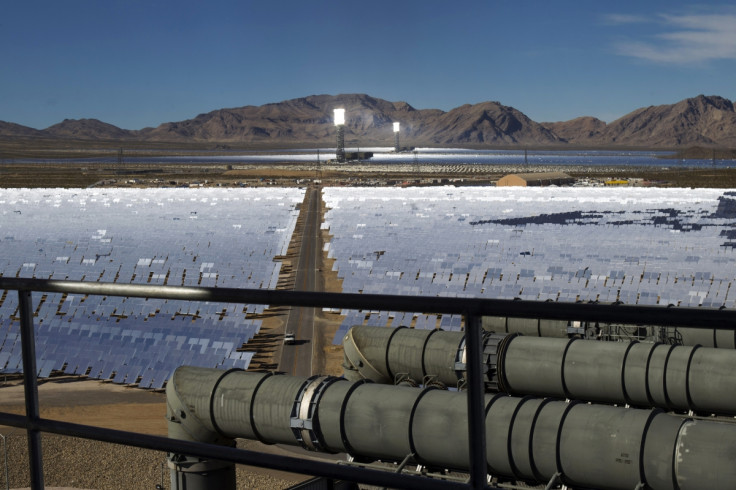Giant California Solar Farm 'Scorches' Birds From Sky

The mirrors of a giant Californian solar plant that will provide enough energy for 140,000 homes are "scorching" flying birds from the sky.
The $2.2 billion Ivanpah Solar Electric Generating System spans 5 square miles (13 square kilometres) of land southwest of Las Vegas in the Mojave Desert.
It is believed to be one of the largest solar plants in the world, and contains three towers as high as a 40-storey building, and nearly 350,000 mirrors, each the size of a garage door. The towers reflect light on to boilers, which create steam to power generators.
Its opening has highlighted the tensions between the renewable energy and wildlife conservation wings of the green movement.
We're trying to figure out how big the problem is and what we can do to minimise bird mortalities
Conservationists claim that it has seriously disrupted the habitat of local bobcats, coyotes, tortoises, and kit foxes, and the 1,000F (537C) temperatures generated by the mirrors are burning birds from the sky.
Biologists producing compliance reports for site owners BrightSource Energy found dozens of dead birds on the site before it opened, some with "scorched" wings and feathers.
"We're trying to figure out how big the problem is and what we can do to minimise bird mortalities," said Eric Davis, assistant regional director for migratory birds at the US Fish and Wildlife Service's Sacramento office. He told the Wall Street Journal: "When you have new technologies, you don't know what the impacts are going to be."
However, with California having pledged to produce a third of its energy through renewables by 2020, sites like Ivanpah are increasingly seen as the future, with Solar Energy Industries Association hailing the plant as "a dawn of a new era in power generation in the United States".
© Copyright IBTimes 2025. All rights reserved.






















